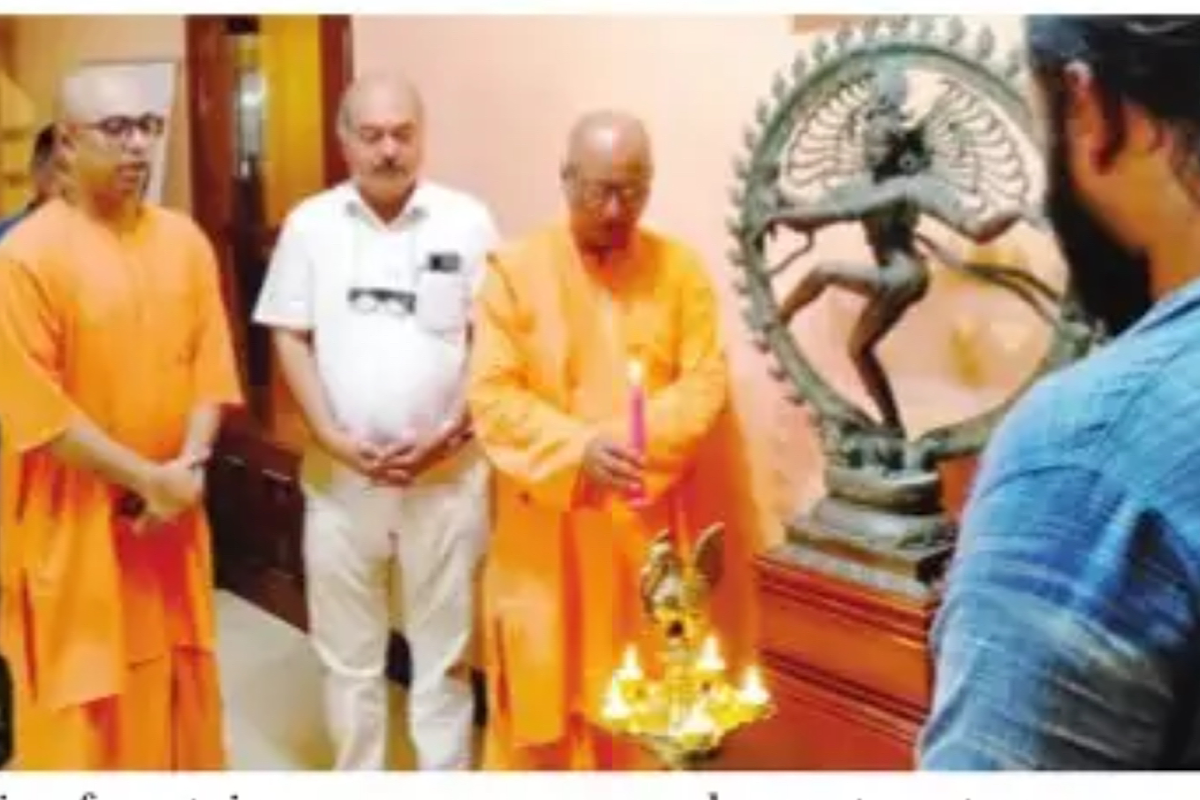Swami Suparnanandaji, secretary of Ramakrishna Mission Institute of Culture (RMIC) inaugurated a two-day exhibition titled, ‘Sulekha Family Meet, Come Let Us Ink Our Relationship at Gol Park on Friday. The two-day exhibition, first of its kind held by a pen manufacturer in the city, is being held at the exhibition hall of RMIC, Gol Park. There are 87 paintings by 15 artists, who have all used Sulekha ink and colour. Sulekha ink and pen is a household name in Bengal.
More than 100 people visited the exhibition on the first day. Experts on fountain pen and ink attended the inaugural session. Kaushik Moitra, managing director of Sulekha said there was live demonstration on handwriting, lettering, calligraphy, sketching, painting and doodling with ink manufactured by Sulekha. Mr Moitra said the ink that has become very popular included Sulekha Swaraj Turquoise Tailman, Sulekha Swadesh Green. The Swadesh brand was introduced in the market to celebrate 75 years of Indian Independence.
Advertisement
The exhibition is important as fountain pens have made a great comeback with more and more people, mainly professionals like doctors and advocates and the younger generation is now using fountain pens. Sulekha has introduced a large variety of pens, which can compete with any international brand like Pilot or Parker. The 94-year old company has a history and legacy. It was Mahatma Gandhi, who requested Satish Chandra Dasgupta, a freedom fighter and called Gandhi of Barrackpore to get someone to manufacture ink during the Civil Disobedience movement in 1930. In 1932, Dasgupta got hold of two brothers, Sankaracharya and Nanigopal Moitra and passed on the ingredients that are used for manufacturing ink.In 1934, Moitra brothers opened a manufacturing unit in Rajshahi, now in Bangladesh.
It was Rabindranath Tagore, who gave the name Sulekha. Sulekha opened a showroom on Harrison Road (now Mahatma Gandhi Road) in 1936. The women of the Moitra family were involved with the manufacturing of the ink. In 1946, the factory at Jadavpur was set up and in 1948, the turnover was Rs 100,000. Sulekha ink became the most popular brand in the country. In 1977, the company was closed due to the militant trade union movement by the Left. In 1991, the company went into liquidation. The revival of Sulekha is more interesting than any movie. Mr Moitra, himself an engineer from Jadavpur University, took the key role in its turnaround.











